There are Murphys out there. Dozens. Catherine, Martin, the occasional George and more than one John.
Dempseys, Grogans, Kellys and Walshes too.
Harry Boyle, Daniel Flanagan and Brian Brophy, a believable half-back line in a hurling match perhaps. A few O’Sullivans and a Geraghty.
They’re alongside up to a million others, with names like Garcia, Lopez and Hernandez. Mixed with Cohens, Roths and Bergmans. Jacksons, Changs and Mohammeds.
All nationalities, all religions. Victims of poverty, the unclaimed and the unknown. They lie in anonymous mass graves, without headstones, on a strip of American land, called Hart Island.
Inhabited year-round, not by humans but by wild geese, raccoon and deer, Hart Island measures approximately one mile long, by a third of a mile wide. It sits in Long Island Sound, a narrow channel of the Atlantic Ocean, south of Connecticut, and close to the Bronx.
The island has had a colourful history. It was purchased in 1654 from the Native American Siwanoy tribe by Thomas Pell, an English physician. When he died, it stayed in his family for more than a century before being sold on.
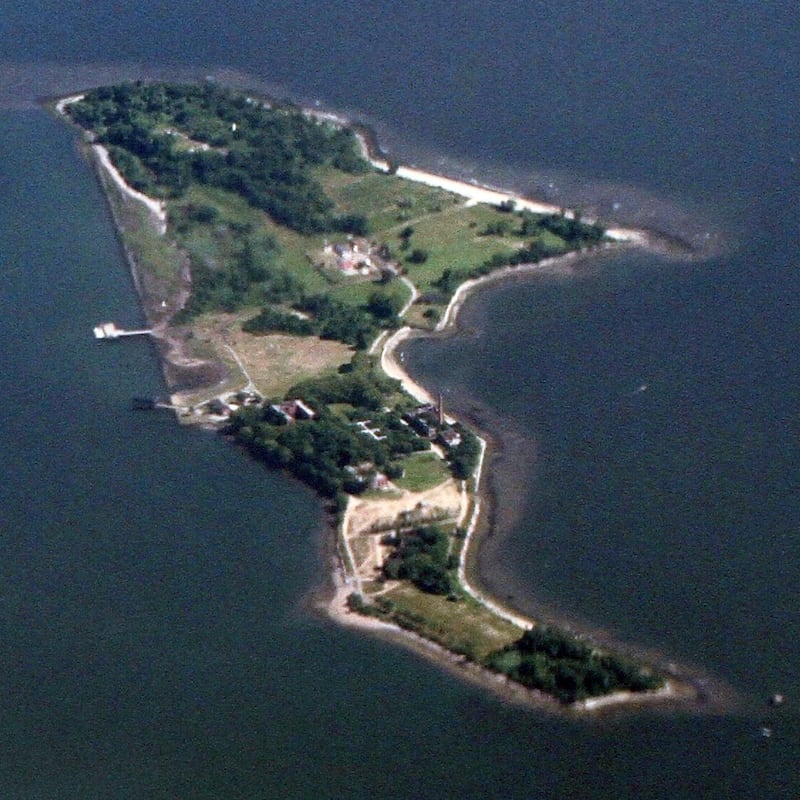
It has since been variously used as a training facility for African-American soldiers during the US civil war; a prisoner of war camp (housing Confederate troops); a quarantine station during an outbreak of “yellow fever”; a psychiatric hospital; a tuberculosis sanitarium; an industrial school; a homeless shelter; a prison; a missile-testing site; and a drug rehabilitation centre.
When the city of New York purchased it in 1868, public burials in its potter’s field cemetery began shortly afterwards. The first was that of a 24-year-old named Louisa Van Slyke.
Bodies are buried in trenches, with up to 150 adults (or as many as 1,000 babies) contained within, and coffins are marked with an identification number and the person’s last name.
Greatly assisting those who may have loved ones buried there, is the Hart Island Project, a non-profit organisation, aimed at improving public access to the island, as well as placing online its burial data. Established in 1994, by New York-based artist Melinda Hunt, it has helped hundreds, even thousands, of people locate, and visit, their deceased relatives’ resting places.
Among the website’s features, is the “Traveling Cloud Museum”, which lists the names and details of tens of thousands of those buried there. This invites visitors to add a comment, photo or memory to their loved one’s online entry. Another is the “ticking clock”: a timer, started at the point an individual was buried, “stops” at the exact moment they are recognised, or rather, when their profile is engaged with and added to.
There are adults penning online letters to the parents they’d long been separated from; immigrants lamenting a long-deceased family members who had left for the US before them, only for disaster to strike; devastated parents, uncovering where their child had wound up; and, perhaps most heartbreaking of all, mothers determining the resting place of the babies they’d lost years, often decades, before.
To date, more than 73,000 individuals have been recorded on the site, with 1,165 of those recognised, their “ticking clocks” now stopped.
Among those that the Hart Island Project has helped, is Belfast woman Imelda Fairfield, who, some years ago, found her grandfather’s brother buried there.
“At first I was delighted, locating him,” says Fairfield. “Then, once I read about Hart Island, I was just heartbroken. It was devastating to know that he had ended up there. I was so upset, but angry too. Part of me was saying, ‘Well, what else could they have done?’ But my emotional side said that nobody should be buried in such a cold, lonely and undignified resting place.”
On average there are 30-40 disinterments a year on Hart Island. That is, bodies removed and reburied elsewhere, usually when families find loved ones through comparing DNA, fingerprinting and photographs,to those kept on file with the New York Medical Examiner.
Children, mostly stillborn babies, are rarely, if ever, disinterred. Many were buried after mothers were approached while still in hospital, and asked to sign forms authorising a “City Burial”. Often the mothers were so traumatised, that they didn’t realise this would mean their children would be buried in mass graves.
Among those disinterred in recent years are several Irish people.
One was a man from Leinster, who this writer located after recognising his name while researching a story about Irish people who went missing overseas. Having emigrated in the 1980s, long before social media, smartphones and even the internet, he’d lost touch with his family and was classed as “missing” for almost 30 years.
Upon seeing his name, I alerted the website, then contacted the Garda in Dublin, the NYPD, and finally, the medical examiner in the US to what at first I felt may have been a coincidence. Subsequent DNA analysis confirmed that the man buried on Hart Island was indeed the man who had been reported missing decades earlier, and his family was notified. They have since successfully had his body disinterred and brought home to Ireland.
Another was a man aged in his 30s from the midlands who died in New York in the late 1990s. He had worked in construction, then in the hospitality industry. Having failed to call home during a family member’s fatal illness, his siblings contacted the authorities. It was eventually determined that he had died in a homeless shelter without any identification in his possession, and was buried on Hart Island. He has also since been removed from Hart Island and reburied in Ireland.
A friend of his told me: “He was like the rest of us, enjoyed the craic. He had friends, family, but sure, you never know what’s going on with someone really. You’d be hanging out with someone, then not see them for a while. To hear months later that he died in a shelter after being on the streets, then buried out there, it’s awful. It could have been any of us.”
In the late 1990s, another Irish family, disturbed at the sudden halt in communications from their elderly uncle who had moved to the US decades earlier, managed to track him down after months of being passed from one government agency to the next. To add to the confusion, when he was found deceased and subsequently buried, his name had been misspelled, prolonging the search. He too has since been removed from Hart Island, and buried in his native county “back home”.
Occasionally, people with identities, living relatives, bank accounts and even property portfolios somehow slip through the net and wind up on Hart Island. People like Irish-American Karen Mary Connors.
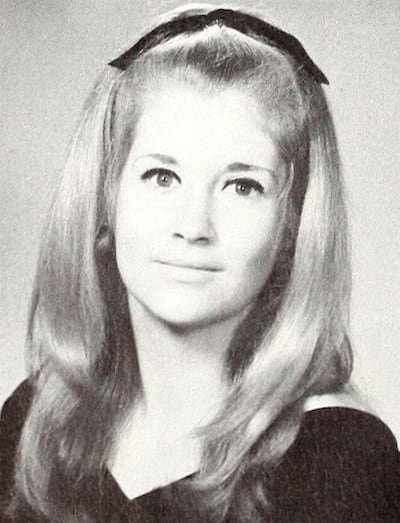
Connors, single and with no children, was a charismatic and generous woman who inherited her parents’ beach-adjacent property after they’d passed away by the time she was in her 30s. The granddaughter of a Kilkenny man and a Dublin woman, Connors enjoyed a successful real estate career; by the time she died in 2011, owned two houses in New York and two apartments in Miami, and had a healthy bank account. Bizarrely, due to several bureaucratic oversights, she was mistaken as a pauper and buried in a mass grave on Hart Island.
That was not her final indignity, however. A neighbour, posing as a friend, fraudulently obtained Connor’s properties, finances and valuables by forging power-of-attorney documents and creating a fake “living trust” in her name. This woman made a substantial income by charging rents on the properties for some years, even applying for (and receiving) $60,000 in government funding for alleged damages during Hurricane Sandy in 2012.
This crime proved to be her undoing, and authorities were alerted to her activities by suspicious tenants. Arrested and charged with grand larceny, she accepted a plea deal to avoid jail time but was ordered to pay restitution, placed on probation for five years, and had to hand the properties over to the public administrator.
As for Karen Mary Connors, plans were made to have her remains disinterred from Hart Island and reburied closer to her parents’ graves on Long Island.
Tipperary girl Margaret Byrne, meanwhile, was 18 when she emigrated. She married fellow immigrant Pat Driscoll and settled in Iowa. For generations, the Driscolls lived in the midwest, with the “clan” eventually witnessing one of their own reach the dizzying heights of Hollywood stardom.
Bobby Driscoll got into acting as a child and appeared in several small roles, until moving on to work alongside stars such as Alan Ladd and Joan Fontaine. He was even awarded a special Oscar in 1949 for his work in So Dear to My Heart and The Window.

The acting roles dried up as Driscoll matured, and a life of petty crime and drug addiction followed – until his unidentified body was discovered by two boys playing in a tenement building in lower Manhattan. He was 31. Driscoll was buried in an anonymous grave on Hart Island, a point somewhat midway between his ancestors’ birthplace in Ireland and his star on Hollywood’s Walk of Fame.
Hart Island was also where many early victims of the Aids epidemic were buried. Such was the panic and misinformation back then that Aids sufferers were buried not six, but 14 feet deep, “just in case”. The only single grave on Hart Island (as opposed to mass graves), with a concrete marker, is that of the very first paediatric Aids sufferer to die in New York City. The inscription on the headstone reads: “SC B1 1985” (Special Child, Baby 1 1985).
To visit the island, one must sign up weeks in advance on the city’s department of correction website (though this system is scheduled to change). After a short ferry ride from City Island, visitors must hand over phones, cameras and recording devices. Then they venture to the general vicinity of where their loved one is buried (since there are no individual markers, it is impossible to tell the exact location) and may leave a small item behind, such as stuffed toy animals, vaseless flowers, prayer cards or photographs.
Other visitors, those without a direct connection to the deceased, must wait by a gazebo, close to where the ferry is docked, and view the surroundings from there.
In recent times, Hart Island has appeared in news stories more frequently. Since 2012’s Hurricane Sandy, which devastated much of the US northeast, there has been much erosion along the island’s coastline, with media outlets publishing photographs which clearly showed human bones being exposed. According to one report, more than 170 separate human bones were recovered on one day alone in April 2018.
Then, in the early days of the Covid-19 pandemic, drone-shot images of mass graves being dug on Hart Island were beamed around the world to a shocked and appalled public. It was subsequently confirmed by New York mayor Bill de Blasio that the island was still used only to bury unclaimed bodies.
Naturally, during the pandemic, when the city’s death rate soared and funeral homes and morgues across the city were overwhelmed, far more burials were recorded at Hart Island than usual. Indeed, many of 2020’s deceased were buried before family members even realised they’d passed, leading to a record number of disinterrments in the subsequent 12 months.
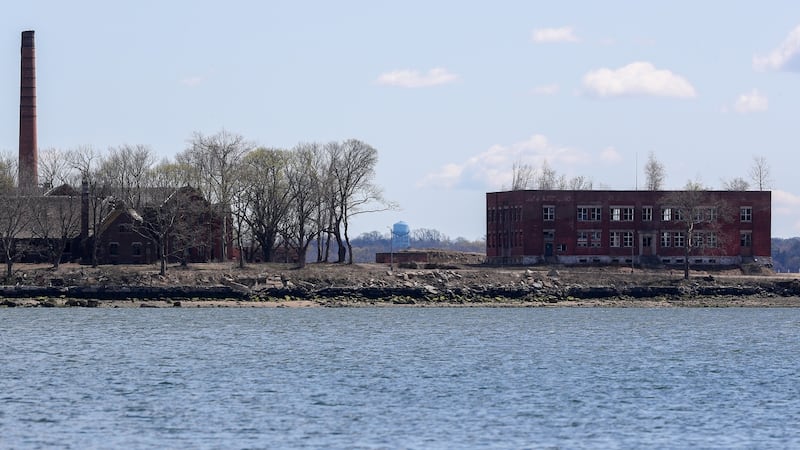
According to one analysis of city data, carried out by New York's Columbia Journalism School, more than 2,300 adults were buried on Hart Island in 2020 (compared with under 850 in 2019). This figure is about 1,000 more than in 1988, the peak year for burials during the Aids epidemic. The New York Times reported in 2006, meanwhile, that there were 1,419 burials the previous year. Of those, 826 were adults and 546 were infants and stillborn babies, while the remainder were dismembered body parts.
Then there’s Jimmy, John and Gerald, three Irish-born men who most likely never met. This, despite having been born within a four-year period, growing up less than half-hour’s drive from one another, and each living for more than 50 years in New York City, occasionally in the same neighbourhoods. But if they missed each other in life, in death they’re just metres apart, all buried on Hart Island.
James was born in Mullabane, Co Louth in 1902 and didn’t have the easiest start in life. His father had lost his first wife during childbirth, leaving him widowed with five children under the age of seven. He married again, and his second wife (James’ mother) bore him another five children.
Young Jimmy worked as a railway porter, before leaving for the US from Liverpool on board the passenger ship Calgaric, arriving in New York City in December 1927. He stayed for a time with his cousin Joseph in upper Manhattan before settling in the Murray Hill neighbourhood.
Working as a chauffeur, he applied for US citizenship, bringing along two friends, Owen Traynor of 95th Street and Guido Santoro from the Bronx, as witnesses. He later became a carpet-layer, working at the Savoy Plaza Hotel on 5th Avenue, and in 1930 was joined in New York by his sister Mary (three of his half-siblings had already emigrated to the US by then).

Brother and sister shared an apartment, and Mary worked as a seamstress at a department store for some years. According to the 1940 census, the siblings, both still unmarried, were living together on 40th Street, and Mary was a chambermaid for a hotel. Jimmy enlisted in the US army during the second World War, reporting for training to Fort Jay Governor’s Island in August 1942, and remained in New York. Mary decided to return to Louth.
Residing on East 53rd Street in his later years, Jimmy died at 85, reportedly from prostate cancer, in October 1987. With no next of kin available, his body went unclaimed and he was buried on Hart Island.
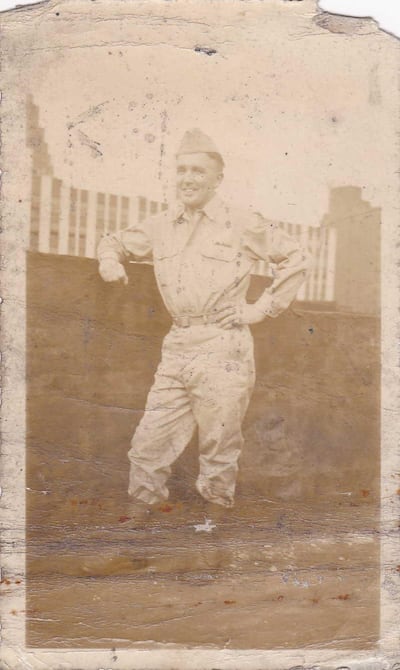
If there’s little information on Jimmy in the public domain, where John is concerned there is even less. From Maguiresbridge, Co Fermanagh, in 1906, he was the youngest of three, born to a police officer father, who turned to farming once he retired from the force, and a homemaker mother who died when John and his siblings Margaret and Daniel were very young.
Like Jimmy, John left his family as a young man and moved to New York. The ship he sailed on, the Transylvania, left Derry in June 1929, with several hundred other young, hopeful Irish emigrants on board, including James McElwaine from Monaghan, Tom O’Connor of Limavady, Letterkenny’s James O’Donnell, and Richard Sloan from Cavan.
At the age of 23, John landed in New York with $40 in his pocket and stayed with his uncle Andrew in Manhattan. He was working at a grocery store and living on 142nd Street when he became a US citizen, with friends Samuel Long, a stonemason, and Margaret Clinton, a housekeeper, as witnesses. He later worked as a labourer.
It’s there that information on John’s life between arriving at Ellis Island as a young man and Hart Island as a much older one (he died in 1983) stops, despite this writer’s attempt at obtaining more information by contacting media and officials in Fermanagh.

Gerald’s situation differs somewhat. Whereas in life his path followed a similar course to Jimmy’s and John’s, Irish men emigrating to “better” themselves, in death he has received a little more recognition as his brother’s granddaughter (Imelda Fairfield) managed to locate his grave via ancestry sites and the Hart Island Project.
Born in Belfast in 1903, Gerald, his parents and his four siblings moved to Fermanagh when he was young. His father, like John’s, served as a police officer. And, like Jimmy, Gerald also left Ireland following a parent’s death; his mother died when he was very young. He emigrated as a teen, and became a US citizen in 1933.
Obtaining his Seaman’s Protection Certificate, which allowed him to work as a ship’s steward, Gerald travelled the world. His name can be found on passenger ships coming into and out of New York from Cuba, Bermuda, Honduras, Panama, Puerto Rico, Morocco, Guatemala, South Africa and Jamaica in the 1930s and 1940s.
Gerald left an Ireland about to erupt into civil war and arrived in New York just as the tumultuous Prohibition era began, then travelled the world as the events that would lead to the second World War unfolded in Europe and beyond. For a time he lived on Manhattan’s West 22nd Street, in a building he shared with lodgers George Mooney, John Connolly and Thomas O’Gorman.
Having travelled to and from exotic islands all over the world as a young man, Gerald’s final stop was at a far less exotic location, Hart Island, where he was buried nine months after John in 1983.
Imelda Fairfield says: “My nanny, who is 97 now, was told about him, when she and my grandfather first started dating back in 1940. There was always talk about Gerald, wondering where he was, and hopes that he was healthy and well, and that they’d one day see each other again.
“There was great sadness about him leaving for America. As a child, I’d be shown photos by my granddad. He wanted so much to find him. It would have broken his heart to have found out that his big brother was buried out there.”
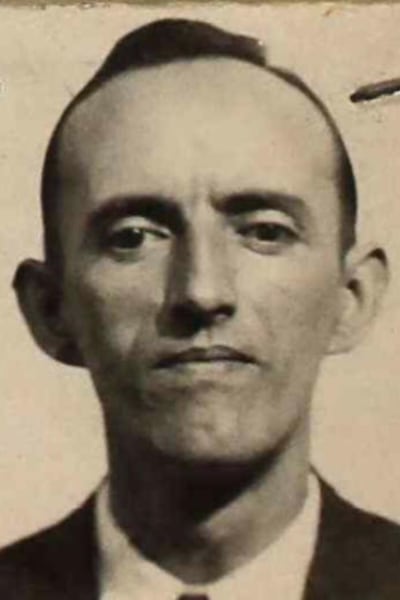
Changes are afoot on Hart Island. Inmates from nearby Riker’s Island jail no longer dig the graves by hand for 50 cents an hour, and the derelict buildings, some of them almost 200 years old, are to be demolished. Control of the island has changed, from the department of corrections to the department of parks and recreation, which should make Hart Island far more accessible for visitors in future.
All the remaining Murphys, Ryans, Dempseys and many more are still out there, and it is unlikely they’ll ever be removed.
As for Jimmy, John and Gerald, they’re still out there, in plots 181, 147 and 140 respectively. It’s unlikely they’ll ever be removed, so that’s where they’ll remain, 3,000 miles from home, alongside the Murphys, Ryans, Walshes and Dempseys, on a lonely strip of American soil. Hart Island.
Michael Fitzpatrick is a New York-based Irish journalist and playwright. mikefitznyc@gmail.com.











